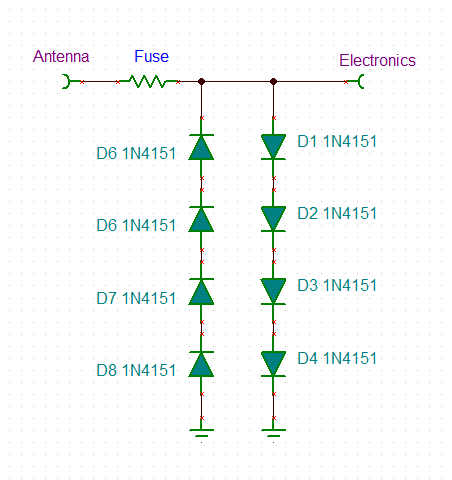Other Parts Discussed in Thread: ASH
I am using the LMH5401 as a preamp for a wideband active antenna. We have the system working to our satisfaction. Now I'm trying to figure out a way to protect not just the amp but also downstream circuitry from strong signals that may sometimes be present in our environment. These signals can be very large and potentially damaging. The signals can last for a fairly long time (several 100 milliseconds and have frequencies ranging from 100 MHz to 1 GHZ). Does anyone have an idea of what the best technique might be for this sort of thing.



